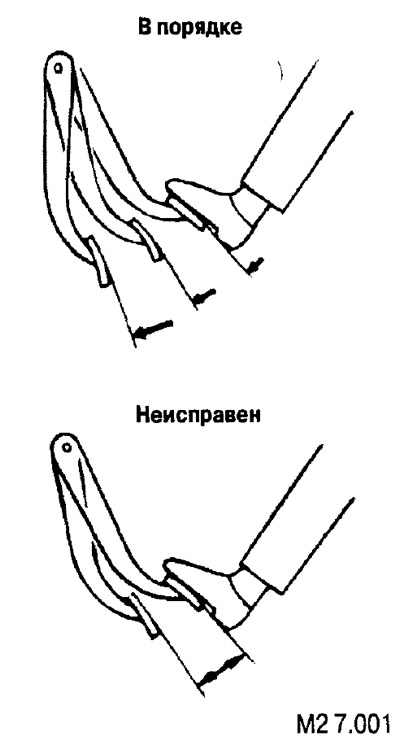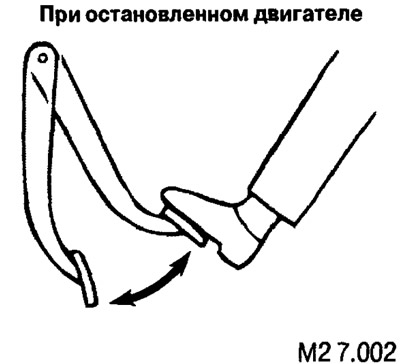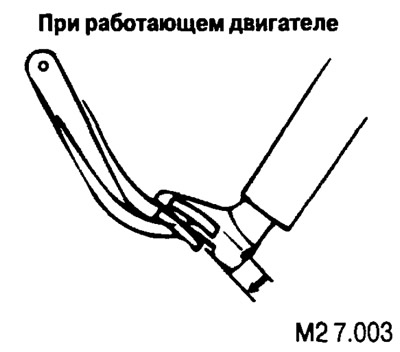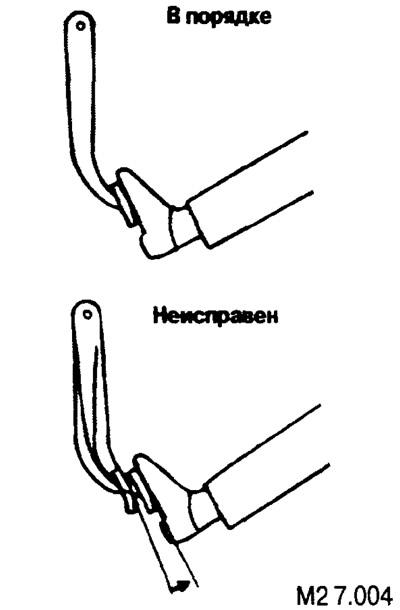1. Start the engine and warm up for 1-2 minutes, then stop it. If the pedal is fully depressed the first time, but gradually stops higher on subsequent times, the booster is OK. If the height does not change, the amplifier is faulty. Go to step 2.

2. With the engine stopped, depress the brake pedal several times. Then start the engine and depress the brake pedal. If the brake pedal only moves a short distance, the booster is in good condition. If there is no change, the amplifier is faulty. Go to step 3.
 |  |
3. With the engine running, depress the brake pedal and stop the engine. Hold the pedal for 30 sec. If the pedal height does not change, the amplifier is in good condition. If the pedal rises - the amplifier is faulty.

In the event that one of the three tests showed a malfunction, the check valve, vacuum hose or booster may be faulty. Check the non-return valve, vacuum hose for leaks, brake booster high pressure vacuum pump and repair or replace if necessary. If the above parts are OK, replace the brake booster and repeat the tests.
